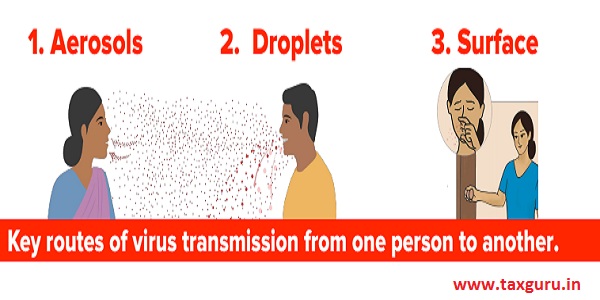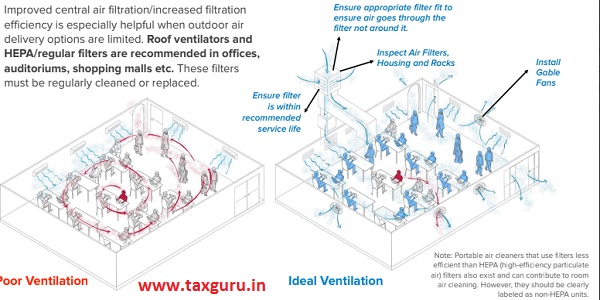Stop the Transmission, Crush the Pandemic.
Masks, distance, sanitation and ventilation to prevent the spread of SARS-CoV-2 virus.
Understanding SARS-CoV-2 Transmission
The SARS-CoV-2, is a highly pathogenic human coronavirus (HCoV), which has caused the global pandemic with alarming morbidity and mortality.
The virus spreads from human to human through saliva and nasal respiratory discharge. Mutations can accumulate in the virus which make new ‘variants of concern.’ Some virus variants may have higher transmission and infection rates.
If COVID Appropriate Behaviour is not followed, surges of infection can re-occur. The virus can quickly spread from a small number of people to a very large population.
Rigorously follow COVID Appropriate Behaviour to reduce and control the transmission of the virus.
Simple interventions and behaviour change can protect you and others from infection.
❋ Always Remember: People who show no symptoms can also spread the virus!
- The SARS-CoV-2 multiplies in the body of an infected person, the ‘host’, and from there can be transmitted to others.
- The virus is released in the saliva and nasal discharge of an infected person through exhalation, talking, speaking, singing, laughing, coughing, and sneezing etc.
- Breaking the transmission of the virus from one person to another by following COVID Appropriate Behaviour will curtail the pandemic.
Even one infected person showing no symptoms can be release enough droplets to create a “viral load” that can infect many others. Symptoms can take up to two weeks to appear in an infected person, during which time they may continue to transmit the virus to others. Some people may never show symptoms and still transmit the virus.
❋ Wear a mask even when you are around people who do not show any symptoms of infection.

Aerosol and Droplet Transmission
- Saliva and nasal discharge in the form of droplets and aerosols carry the virus from one person to another.
- Larger size droplets fall to the ground and on surfaces, and smaller aerosol particles are carried in the air to greater distances.
- In closed un-ventilated indoor spaces, droplets and aerosols become quickly concentrated and greatly increase the risk of transmission to people in the area.
Infection transmission risk is much lower in outdoor areas, as virus particles get quickly dispersed.
♦ Just as smells can be diluted by ventilation, the dangerous concentration of the virus can be reduced by ensuring that outdoor air flows in.
♦ Droplets emitted by an infected person land on various surfaces.
♦ When someone touches these contaminated surfaces, and, without washing hands with soap, touches their mouth, nose or eyes, they can contract the virus.
♦ These virus laden droplets can survive on non porous surfaces such as glass, plastic and stainless steel for a fairly long time.
❋ Frequent cleaning of high contact points such as door handles, light switches, tables, chairs and the floor with disinfectants, like bleach and phenyl, can remove the virus contamination from surfaces.
Wear Masks
✓ A double layer cotton homemade mask is better than none.
✓ N95 mask offers maximum protection.
A mask should:
♦ Fit snugly on your face leaving no air pockets around your nose or chin.
♦ Cloth masks should be washed and sun-dried each day.
❋ Wear masks when away from home and also at home when with outsiders.
For Double Masking:
♦ Wear a surgical mask, then wear another tight fitting cloth mask over it.
♦ If you do not have a surgical mask, wear two cotton masks together.
♦ Ideally surgical mask should be used only once, but when pairing, you can use it up to 5 times by leaving it in a dry place for 7 days after one use (ideally give it some sun exposure) and then reuse as double layer.
Surgical masks should never be washed.
Ventilation: Home
Let outdoor air flow in to displace indoor air. This directional air flow and improved ventilation can lower the potential for infection from accumulated viral load in closed spaces. Better the ventilation, lower the potential for transmission.
Fan placement is important. Avoid placing fans in a way that could potentially cause contaminated air to flow directly to someone else. Installing an exhaust fan is important. Keep exhaust fans running if the windows and doors are shut.
Add an exhaust fan OR turn a pedestal fan into an exhaust fan by turning it to face outdoors, to create the ideal air flow for maximum protection from indoor infection.
Ventilation: Hutments
Ventilation: Work Spaces
Ventilation: Centralized Air Management Systems
Ventilation: Additional Considerations
Ensure cross flow of air in public transport vehicles:
♦ Keep windows open in buses and trains where possible
♦ Introduce exhaust systems to improve airflow in air conditioned buses and trains
♦ Also introduce HEPA/regular filters in air conditioning systems. These should be cleaned and replaced regularly.
Higher ventilation and directional air flow away from people can curtail the transmission of the virus.
❋Hospitals and health centers must ensure that vaccinations are carried out in well-ventilated and directional air flow controlled areas.
Community-level Testing and Isolation (For rural/semi-urban areas)
- Get Rapid Antigen Testing done for people entering the area.
- ASHA/Anganwadi/Health Workers must be trained and protected for conducting the Rapid Antigen Test.
- These health workers must be given a certified N95 mask even if they are vaccinated.
- ASHA/Anganwadi/Health Workers to also be provided oximeters to monitor infected person.
❋ Every person who tests positive should be given a certified N95 mask, or a surgical mask if this is not feasible, and advised isolated as per ICMR guidelines.
____


















